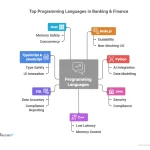
Understanding trends enables investors of all experience levels to make smarter trading decisions. By keeping longer time horizons in mind, investors can avoid reacting to small daily price fluctuations by instead looking for the big picture.
Recognizing an uptrend early can help you take advantage of its momentum while preventing early sell-offs; and identifying resistance and support levels can reduce risks by setting strategic exit points.
1. Look at Long-Term Trends
Understanding trends can make an enormous difference when it comes to investing. Utilizing charts to detect upswings and downswings can help guide your purchasing and selling strategies, and also recognize how different trend time frames relate – for instance, daily charts provide different signals than weekly ones.
No minimum duration exists to validate a trend; the longer an upward or downward movement continues, the more visible its effects become. Trends can usually be identified by connecting price action using lines with higher highs and lower lows for an uptrend and vice versa for downtrends.
Search the chart for signs of support or resistance; these lines indicate a price that the stock will likely stay above. A line of support might represent where support would begin while resistance might indicate where it might stop.
2. Look at Volume
High trading volumes indicate market participants’ strong commitment to a particular direction. Furthermore, large trade volumes indicate significant buying and selling activity which bodes well for investors.
Tracking the changes in stock trading volume trends can also provide insight into whether price movements may be shifting in either direction. A sudden decrease in prices with low volume may signal that market participants don’t believe that trend will persist.
On the other hand, gradual price growth with increasing volume may indicate that market participants perceive that the stock is undervalued and worth purchasing. Therefore, trading volume should always be taken into consideration by investors when trading on stock markets – as this information could make or break your profitability! Just ensure any trend analysis includes additional information like reversal patterns and key levels.
3. Look at Moving Averages
Know-how can make all the difference in consistently making profits or facing frustrating losses that erode away at your investment account. Gaining knowledge of current stock market trends will allow you to make smarter trading decisions that could ultimately mean greater returns for your investment portfolio.
Traders use moving averages to identify and analyze price trends. These lines are calculated by smoothing out daily price fluctuations so it is easier to see underlying patterns.
Trend indicators frequently used are the 200-day and 50-day moving averages, where an uptrend occurs when stock price exceeds one of these two lines; when stock price dips below either line it indicates a downward trend. Other popular trend indicators include market capitalization (market cap) and volume, which track how many shares have changed hands within any specified time frame; high volumes indicate increased interest and activity surrounding that stock.
4. Look at Candlesticks
Candlestick patterns are believed to reveal traders’ emotions and the momentum behind price movements, while also helping you identify reversal patterns. A green candlestick indicates an increase in prices while red ones indicate decreases; their respective tails or shadows (wicks) represent intraday high and lows that reveal information on price changes over time.
At the bottom of a downtrend, a hammer or inverted hammer often indicates strong buying pressures had their way and will drive prices back upwards again. A shooting star, which is just its exact opposite, can also indicate this potential positive movement.
A doji with short upper and lower shadows signals indecision and may signal a reversal in trend. A candlestick with long upper shadow, known as gravestone doji, often portends bearish signals while one with long lower shadows (known as dragonfly doji) usually indicates bullish trends.





